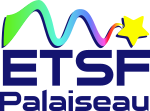| Author |
|
|---|---|
| Keywords | |
| Abstract |
This Roadmap article provides a succinct, comprehensive overview of the state of electronic structure (ES) methods and software for molecular and materials simulations. Seventeen distinct sections collect insights by 51 leading scientists in the field. Each contribution addresses the status of a particular area, as well as current challenges and anticipated future advances, with a particular eye towards software related aspects and providing key references for further reading. Foundational sections cover density functional theory and its implementation in real-world simulation frameworks, Green’s function based many-body perturbation theory, wave-function based and stochastic ES approaches, relativistic effects and semiempirical ES theory approaches. Subsequent sections cover nuclear quantum effects, real-time propagation of the ES, challenges for computational spectroscopy simulations, and exploration of complex potential energy surfaces. The final sections summarize practical aspects, including computational workflows for complex simulation tasks, the impact of current and future high-performance computing architectures, software engineering practices, education and training to maintain and broaden the community, as well as the status of and needs for ES based modeling from the vantage point of industry environments. Overall, the field of ES software and method development continues to unlock immense opportunities for future scientific discovery, based on the growing ability of computations to reveal complex phenomena, processes and properties that are determined by the make-up of matter at the atomic scale, with high precision. |
| Year of Publication |
2024
|
| Journal |
Electronic Structure
|
| Volume |
6
|
| Number of Pages |
042501
|
| Date Published |
nov
|
| URL |
https://dx.doi.org/10.1088/2516-1075/ad48ec
|
| DOI |
10.1088/2516-1075/ad48ec
|
| Download citation |
Roadmap on methods and software for electronic structure based simulations in chemistry and materials
Developed & Designed by Alaa Haddad. Customized by ETSF Palaiseau © 2025.
